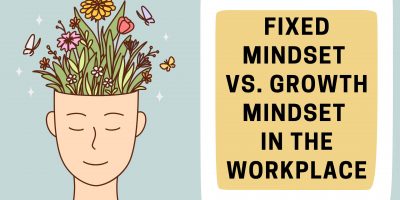
Steps for Launching a Corporate Fitness Challenge
Beyond step counters and group exercise, corporate fitness challenges inspire movement in the company’s bottom line, but only when done right.


Co-Founder & CEO of Kudoboard
Over the last thirty years, corporate employee wellness programs have become a staple in US workplaces, and deservedly so.
Businesses are increasingly investing resources to enhance employee health, recognizing that such initiatives not only benefit workers but also have a transformative impact on entire workforces and the broader community.
Yet, despite these benefits, skepticism among employees and business leaders regarding the effectiveness of these programs is common.
So, what are the foundational elements that determine the success of employee wellness programs?
In this article, we aim to answer which key elements contribute to the effectiveness of employee wellness programs.
Employee wellness programs can take many forms, with varying duration, intensity, and goals. From physical challenges to stress management initiatives, there are many unique approaches targeting different aspects of wellness.
Below, we explore the fundamental elements that forward-thinking employers are incorporating into their well-being programs.

Conducting regular health screenings and biometric assessments is a vital practice for monitoring and managing employee health.
Measures like blood pressure, cholesterol levels, and body mass index provide an in-depth view of an employee’s health status and can help reveal hidden health risks. Therefore, by conducting these health risk assessments, companies can customize wellness plans to better meet employees’ needs.
Employers can partner with companies like Applied Health Analytics, known for using data-driven approaches in health assessments. Basically, Applied Health Analytics collaborates with health systems to deliver technologies that not only assess risks but also align these findings with services that cater to the specific health needs of employees, promoting overall population health.
Many employees spend long hours sitting in an office, limiting their opportunities to exercise and move around. To combat this, some companies provide on-site gym services and fitness classes. Others go even further, introducing a variety of physical wellness initiatives for their staff.
For instance, YuMuuv is a wellness platform that encourages physical activity through various challenges. These challenges include walking, yoga, and even plank competitions, making physical fitness fun and accessible for all employees.
Another example is Aaptiv. Aaptiv focuses on fitness and physical wellness through its mobile app, which offers guided workouts and fitness plans. With a structured workout program, Aaptiv makes it easy for employees to integrate regular physical activity into their daily schedules.
A recent survey found that 76% of US workers reported experiencing at least one symptom of a mental health condition. Just as physical wellness impacts our daily lives, mental health also profoundly affects both personal and professional spheres.
For these reasons, companies must prioritize mental health in wellness programs and provide effective stress management.
One company that offers specialized support in this area is 2Morrow Inc. They provide digital health programs focusing on behavioral change for stress management, smoking cessation, or weight management.
For employees struggling with grief, Empathy offers support that focuses on emotional health and resilience. Their programs provide resources and guidance to help navigate the challenges of loss, including personalized emotional health coaching.

A study by the Institute for Health Metrics showed that poor nutrition has almost three times the impact on health as low fitness. Given that over two-thirds of the US population is categorized as obese and 98 million Americans are dealing with pre-diabetes, the need for improved and more accessible nutrition education is evident.
In light of this, employers must consider providing nutritional support as a component of any comprehensive wellness program. They can incorporate practical strategies, such as educational resources on nutrition, hosting workshops or seminars, or simply providing healthy snacks in the office.
Some dedicated companies like Aduro offer a holistic approach to wellness, including nutritional guidance, mental health, and physical fitness programs.
Supporting a healthy work-life balance is crucial for overall well-being and reducing stress.
Employers can implement policies that allow flexible working hours, giving workers more control over their schedules. Additionally, incorporating remote work arrangements and offering paid time off are effective strategies to achieve a better work-life balance.
To further support these initiatives, employers can partner with companies like Wellness Coach. With a wide range of wellness categories, including mental health, fitness, sleep, nutrition, and finances, Wellness Coach provides a guided and coaching approach to employee well-being, leading to a healthier and more balanced lifestyle.
According to a recent study, 86% of employees report they feel increasingly stressed about their finances. Financial strain is a universal issue among employees, and employers would be wise to recognize their role in promoting financial education among their workforce.
With financial wellness programs, companies can give employees the tools and knowledge to achieve greater financial wellness, a sense of security, and reduced stress related to monetary matters.
For instance, platforms like Wellworks For You help employees facilitate positive behavior changes by providing educational resources, personalized coaching, and practical tools to improve financial wellness and promote healthy financial habits.
Engaging in good deeds and helping others often brings a sense of fulfillment and happiness. Employers can harness this positive energy by organizing volunteer days, where their teams can contribute to community projects.
Navigate Wellbeing Solutions understands the importance of community engagement in promoting overall employee well-being. Their wellness platform provides organizations with the tools and resources needed to create personalized well-being programs covering various dimensions, including community engagement.
Through Navigate’s platform, employers can promote and organize community service events, track employee participation, and celebrate their contributions to the local community.
Employee wellness programs should go beyond just promoting physical activity goals, such as reaching 10,000 steps a day or a number on the scale.
Instead, employers should implement various environmental health enhancements to create a workspace that nurtures physical and mental wellness.
For instance, they may improve indoor air quality through proper ventilation and air filtration systems, incorporate office design elements such as natural lighting and plants, and use ergonomic workstations to reduce the risk of musculoskeletal disorders.

Rewards and incentives in wellness programs help employees stay motivated and create a lasting culture of health. While it’s best if people change their lifestyle because they genuinely want to, incentives can encourage them to start making healthier choices.
Companies like WellRight offer wellness platforms with meaningful incentive programs and rewards. Similarly, with BSDI‘s app, employees can log their wellness program activities and lifestyle habits and join incentive programs.
By offering incentives for participation and achievements, platforms like BSDI and WellRight ensure that employees remain engaged and motivated to build lasting healthy behaviors.
Continuous improvement and feedback are essential for organizations to create successful wellness programs. However, challenges can occur during this process.
Aaron Rubens, Co-Founder & CEO of Kudoboard, highlights the importance of employee input.
He explains, “Effective communication is the cornerstone of employee wellness. It’s essential to listen to employees, understand their concerns and needs, and create action plans that support the workforce.”
Similarly, much of today’s technology is engineered to adapt and improve based on the user’s feedback, preferences, and needs.
Take, for instance, the AI-powered app BetterYou, which offers personalized wellness suggestions by monitoring user data and feedback. The app includes habit-tracking tools and tailored wellness suggestions adapted to employees’ unique needs.
In conclusion, the most successful employee wellness programs are those that adopt a holistic approach, addressing the diverse needs of their workforce. These programs go beyond simply offering physical health initiatives by encompassing mental, emotional, nutritional, financial, social, and environmental aspects of well-being.
In short, a holistic approach to employee wellness programs recognizes that true well-being is multifaceted and requires ongoing commitment and adaptation.
Disclosure: Some of the products featured in this blog post may come from our partners who compensate us. This might influence the selection of products we feature and their placement and presentation on the page. However, it does not impact our evaluations; our opinions are our own. The information provided in this post is for general informational purposes only.
Senior Content Writer at Shortlister
Browse our curated list of vendors to find the best solution for your needs.
Subscribe to our newsletter for the latest trends, expert tips, and workplace insights!

Beyond step counters and group exercise, corporate fitness challenges inspire movement in the company’s bottom line, but only when done right.

Discover over 30 advantages of implementing corporate wellness programs in your workplace.

How do you know if your wellness plan is cost-effective and working out for you? How can you measure employee well-being?

Understand the key differences between a fixed and a growth mindset to foster a culture of development and adaptability at work.
Used by most of the top employee benefits consultants in the US, Shortlister is where you can find, research and select HR and benefits vendors for your clients.
Shortlister helps you reach your ideal prospects. Claim your free account to control your message and receive employer, consultant and health plan leads.